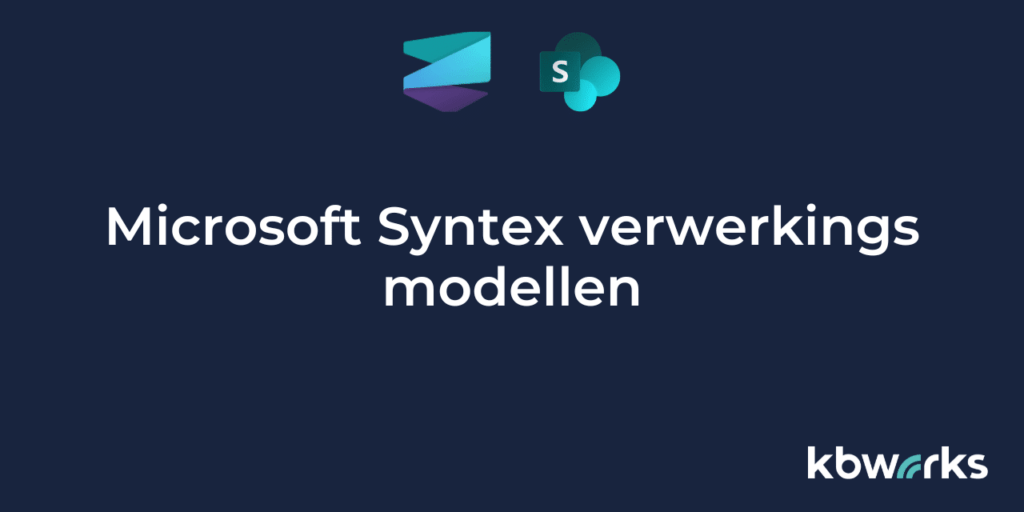
Microsoft Syntex: A powerful tool for content understanding
In today’s world, we’re inundated with information. Businesses produce and receive vast amounts of documents every day, from contracts and invoices to policy documents and project plans. It can be difficult to keep track of and organize all of this information, let alone extract meaningful insights from it.
That’s where Microsoft Syntex comes in. Syntex is a content understanding solution that uses artificial intelligence (AI) and machine learning to automatically find, organize, and classify documents in SharePoint libraries, Microsoft Teams, OneDrive for Business, and Exchange.
In this article, we’ll cover the basics of how Syntex works and explore human interaction with the AI tool. We’ll also look at some potential applications of Syntex and how it can be used to improve business processes.
How does Syntex work?
Syntex uses AI models to identify documents and extract information from them. This information is stored as a content type and metadata in SharePoint. When a Syntex model is applied to a library, simply drag documents into the library (or upload them in bulk via a .csv file) and the model will automatically assign a content type and extract the metadata for you. It will also apply a sensitivity and/or retention label if you need it.
There are two different approaches (currently) in Microsoft Syntex. A document understanding model (also called unstructured document processing) relies heavily on finding content based on keywords. A form processing model (also called structured document processing) relies on the format of the document to find information.
Let’s take a closer look at each type of model.
- Document (unstructured) understanding model
The document understanding model is used for inconsistent file formats. It uses a trainable classifier to identify the content type of the document and optional extractors to extract metadata from the document. Multiple models can be applied to the same library.
Examples of document types that are suitable for this model include policy documents, procedures, letters, contracts, requests for proposals, and project documents.
- Form (structured) processing model
The form processing model is used for semi-structured file formats. It uses a configurable classifier that maps a page layout to a content type. Only one model can be applied per library, but it can coexist with multiple unstructured models in the same library.
Examples of document types that are suitable for this model include purchase orders, quotes, invoices, and applications.
Training your model
To train a model, you need at least five similar documents and one document that is different. You click through each document and say “yes” or “no” to teach the AI what type of document it is. Once the AI can identify the type of document, you can teach it to find metadata in the document by highlighting the information you are looking for.
The training process can vary depending on the type of model you are using. For example, for a document understanding model, you might need to mark keywords or phrases that indicate what kind of document it is. For a form processing model, you might need to indicate where certain information is located on the page.
Potential Uses of Syntex
There are many potential uses for Syntex. Here are a few examples:
Procurement Process: Syntex can be used to extract metadata from documents needed to approve a new vendor. This can streamline and speed up the procurement process.
Records Management: Syntex can be used to apply retention to incoming documents. This can help with regulatory compliance and managing company records.
Improve Search: By capturing keywords in documents, Syntex can help improve searches. This can make it easier to find relevant information when you need it. (Note: Searching PDFs is also possible.)
Identify Sensitive Information: Syntex can be used to find sensitive information when a document is uploaded and then protect the content with a sensitivity label. This can help protect confidential company information.
But that’s just the beginning. Once you’ve extracted the metadata, you can use it to fire off workflows to do all sorts of things with the documents: • Move them to a new, secure location • Route them to the right person for approval • Notify them that all documents have been received
A note on licensing: For each Syntex per user license, you get 3,500 AI Builder credits per license, allocated per month at the tenant level. Document understanding can be done by anyone with an assigned Syntex license, but form processing requires a capacity add-on for your Power Platform subscription. Capacity must be allocated to the Power Apps environment where you’ll be using AI Builder. To create a form processing model, I’ve only ever had to ask for a Power Apps license (per user) to be assigned to me. The Power Automate per user with attended RPA plan also includes AI Builder capacity.
To read more or learn more about the pre-built models that come with Syntex, see this Microsoft Learn article – Overview of Model Types in Microsoft Syntex – Microsoft Syntex | Microsoft Learn
Conclusion
Microsoft Syntex is a powerful tool that can help businesses understand, organize, and classify their documents. By using AI and machine learning, Syntex can automatically extract information from documents and store it as metadata in SharePoint. This can help improve business processes, meet regulatory requirements, and protect confidential information.
I hope this article has given you a better understanding of what Syntex is and how it works. If you’d like to learn more about how Syntex can help your business, please contact us.

Pingback: Microsoft Roadmap, messagecenter en blogs updates van 22-07-2023 - KbWorks